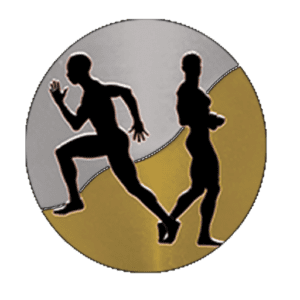The barbell reverse lunge is severely underappreciated when it comes to leg exercises.
Most lifters consider either squats or deadlifts as the greatest lower body exercises of all time. Lifters have used barbell squats for generations to build strong, muscular legs. Conventional deadlifts are not a pure lower-body exercise. But deadlifts and their variations have built impressive backsides for years.
For most lifters in the iron game, the answer would be one of the above. And you would have a formidable argument for both. But is the barbell reverse lunge also worthy of the crown?
Lunges? Really?
Barbell reverse lunges are an effective way to build bigger and stronger legs.
But barbell reverse lunges are not a popular exercise. You will see squat and deadlift videos all day on social media. But watching proper barbell reverse lunges online is as rare as snow in the summer.
The reason you do not see lunges has nothing to do with how great they are for lower body development. Lunges are often avoided for several reasons. Most lifters avoid them like people steer clear of a skunk at a perfume convention.
The first reason is fear. Barbell reverse lunges are much harder to do than squats or deadlifts. This is because you are not set in one place for the duration of the exercise. You have to step back on one leg, and then you have to step forward.
The second reason is your fitness level. You can’t be out of shape when doing barbell reverse lunges. Your heart rate and pain level will be higher in comparison to squats and deadlifts.
The third reason is form. Most lifters do not know the correct way to perform barbell reverse lunges. I have seen barbell reverse lunges performed a few times during my career in the iron game. Ninety-nine percent of the time, the form is ghastly.
To execute your barbell reverse lunges correctly, I have got four helpful cues for you.
1) You Must Create Tension In Your Upper Body
Not locking in your upper body while doing barbell reverse lunges is a big mistake.
For example, if you try to step back into a lunge and your body is loose, you will fold at your hips. After you unrack the bar, you will create the tension in your upper body by doing the following:
•Place your eyes forward
•Keep your chest up and shoulders back
•Draw your elbows towards your lats
•Keep your abdominals tight
As you step back into the lunge, you’ll feel confident, like after a fresh cut at the barber shop.
2) Your Back Knee Must Contact The Floor
Half-reps plague many commercial gyms. And even some hardcore ones too.
Half-reppers either have too much ego, or they do not want to work hard. Lunges don’t cater to ego. When lifters cut their range of motion, they bypass the hard effort that lunges require.
Doing barbell reverse lunges with bad form means you’re missing out on leg gains. To do a barbell reverse lunge correctly, let your back knee gently touch the floor as you step back. This will ensure that your legs work through a full range of motion.
3) Apply The Force Through Your Heel And Mid-Foot
When doing a barbell reverse lunge, many lifters make a major mistake. They push through the balls of their feet instead of their heels. Their heels also come off the ground when they try to stand. Putting too much pressure on the balls of your feet during lunges can strain your knees.
You need to push through your heel and midfoot. Doing this will allow your muscles to do the work instead of your joints. The goal of lifting weights is not to put your joints and tendons in compromising positions.
Conclusion
The barbell reverse lunge will help you build great legs and glutes. But you have to have great form to achieve those goals and minimize your risk of injury.
I’ll holla at you next time.
The People’s Trainer,
Fitman



[…] Split Squats (barbell or dumbbell) • RDLs • Hip/Back Extensions (barbell or dumbbell) • Reverse Lunges (barbell or […]